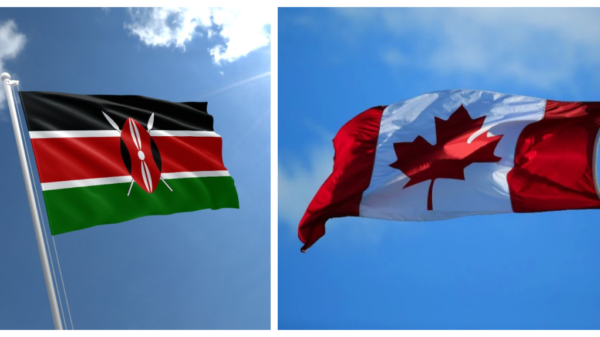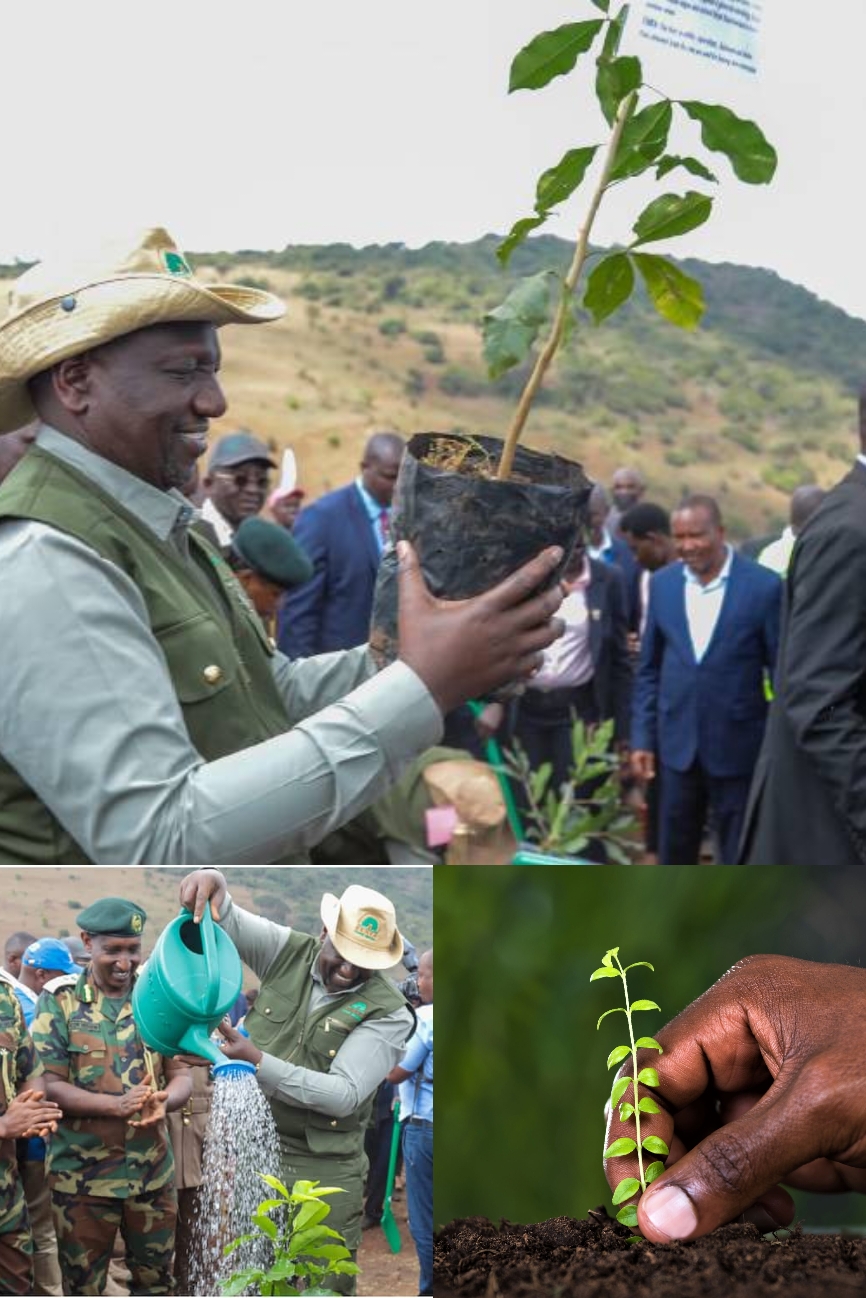- For thousands of years, the earth has used trees to combat climate change
- Life cannot exist without the presence of trees on the planet
- Trees have countless benefits to everything on the planet from sea animals to countless people working around the world
Follow us on Facebook and X for More News and Exclusives
Tree planting is perceived to be the most engaging, environmentally-friendly activity that people can take part in to make the planet a better place.
For thousands of years, the earth has used trees to combat climate change. Life cannot exist without the presence of trees on the planet. They have long-term and short-term benefits as well. Most people decide to enhance their gardens with trees for their aesthetic beauty, connecting with nature, or for their calming effect.
However, trees do more to the environment than we might think. They enhance air quality, slow down heavy rains and reduce flooding, prevent excessive heat and provide shade and remove carbon from the atmosphere.

President William Ruto plants a tree to mark the national tree planting day. Photo: Presidential Press
Trees have countless benefits to everything on the planet from sea animals to countless people working around the world. Planting a tree not only benefits those who live locally around it but to the whole population such as by removing carbon from the atmosphere. People who live near trees experience many benefits such as improvement in their quality of life. Trees have a positive impact on mental health by reducing stress and encouraging outdoor activities. If you are thinking of planting, read below to find out the many benefits trees have on the environment.
Clean The Air

After taking a stroll in the woods, you might have felt that there is clean air. It is true because the trees do purify the air. Trees are among the irreplaceable resources on the planet that provide oxygen. Through a process called photosynthesis, trees take in carbon dioxide and produce oxygen as a by-product. Creatures on the earth can not survive without oxygen. By planting more trees, we are creating more oxygen to breathe and sustain our lives. There are many types of trees on the planet, the amount of oxygen produced by each may vary.
Trees absorb odors and other harmful gases like ammonia, nitrogen oxides, Sulphur dioxide, and ozone. They also filter out dust and particulates from the air by trapping them in the leaves and barks. An acre full of mature trees can provide oxygen for 18 people for one year. Planting trees strategically around your home can substantially save you on air conditioning. You will save money and reduce carbon dioxide emissions.
The planting of trees helps cool the air especially in urban areas where it is 9 degrees warmer than places with trees. Because of this, architects and environmentalists came up with solutions to have indoor trees and green roofs. Green roofs provide great cooling and remove heat from the air thus saving the environment. Indoor trees act as natural air conditioners and save money and cooling bills.
Reduces Greenhouse Gas
Carbon dioxide the ‘greenhouse gas’ is notorious for its heat-trapping properties. The levels of carbon in the air are a great deal as the planet continues to heat up at an alarming rate. Global warming is a result of excess greenhouse gas caused by destroying rainforests and burning fossil fuels. We hear about the carbon footprint but many do not know it is carbon dioxide, CO2.
Planting trees save our planet by combating the effects of greenhouse gas. According to research, an adult tree can store 13 pounds of carbon or change 48 pounds into oxygen all in one year. An acre full of trees stores 2.6 tons of carbon dioxide in one year. With its heat absorbing and air purifying properties, not only does planting trees affect you locally but it affects others around you and helps in the fight against global warming.
Reduce Soil Erosion
Planting trees has sustainable benefits to the environment too. Rain and wind are the main forces that damage bare soil causing erosion. As rain hits the ground, it has enough power and momentum to penetrate the soil. Trees break down the rain droplets weakening their strength preventing damage to the soil. The roots of trees hold on the ground strongly keeping the soil from washing away because of rain or storms. Trees, therefore, lower the occurrence of landslides on hilly areas and prevent the loss of fertile land by slowing down sedimentation in rivers. Trees also are windbreakers and prevent the soil from being carried away. Places without trees end up as deserts and inhabitable. Planting trees benefits such areas by transforming them into oases making them more habitable and productive. Mangroves are known to protect endangered coastlines from disappearing into the sea.
The root of trees also stores the rainwater preventing runoff. The report has shown that 100 trees can reduce runoff caused by rain by up to 400,000 liters!
Protect the Ozone Layer
Every year we hear news of global warming as temperatures are on the rise. This happens because people are replacing trees with absorbing buildings and roads, which makes cities warmer. Planting trees reduce ozone layer pollution largely as carbon dioxide is the most common greenhouse gas. It is to be noted that ground-level ozone pollution is different from the ozone layer, which is high in the atmosphere. Pollutants used in aerosol cans and refrigerants may have destroyed the atmospheric ozone that absorbs the sun’s ultraviolet rays. Trees absorb nitrous oxides that form the ground-level ozone released when people burn fossil fuels. In some places, the ozone, a toxic component, is visible as smog that blankets a city.
Having more trees around reduces the potential health and environmental effects of ozone in the air. Once inside plants leaves, the gases are absorbed and converted hence reducing the pollution to the environment. Having more trees, especially in urban areas means there will be more breathable air and the temperatures will be mild.
Trees are our main survival means by providing more oxygen, blocking sunlight removing heat from the atmosphere, and providing cooling in streets and cities.
Prevent Water Pollution
With many substances in the atmosphere, stormwater picks up many pollutants, dirt, and bacteria that cause a threat to clean water in many places. It is often worsened by human activity and contains phosphorus and nitrogen pollutants from fertilizers and other waste. As rainwater hits places like roads and roofs, it becomes stormwater and may include oil, heavy metals, pesticides, grease, and other chemicals contaminating our waters. Having trees around breaks the rain and allows water to seep into the ground. This reduces the risk of stormwater carrying pollutants flowing into streams and oceans.
Planting trees creates a filter-like sponge as they filter this water and help recharge groundwater supplies and in turn, we have cleaner water for use.
Conserve Energy
Trees help in lowering the temperature and keeping a place cool. Planting trees strategically around buildings and homes reduces energy consumption for heating and cooling by 30 percent. This means saving on money used for air conditioning reducing carbon and other pollutants from power plants.
Many companies are focusing on using renewable energy sources seeing the damages of fossil fuels. If trees are used sustainably, they can be excellent eco-friendly fuel. Trees planted in urban areas reduce the ‘heat-island’ effect by absorbing light energy and reflecting it as heat. Leafy trees provide shade during hot days and heat buildings during winters as they shed their leaves during this time. Not only do trees cool the local area but they cool the whole planet. Water evaporating from trees creates low-level clouds which reflect the sun thus cooling the earth’s surface.
Save Water
Planting trees helps to save water. As trees provide shade, the water from low vegetation will evaporate slowly. Newly planted trees only require 15 gallons of water in a week. As trees develop, their atmospheric moisture increases. As trees provide the cooling you will use less water for lower plants like crops and flowers grown below the trees. Trees are the main components of forming clouds and creating rain. If there is more rainfall, the groundwater level is likely to increase. In addition, trees catch water and snow purifying it and sending it to the aquifer through their roots. This means cleaner water for use after some drilling. Planting trees is the most eco-friendly way of efficiently conserving groundwater.
Provide Habitat
Trees boost biodiversity as they are a home and food source for many creatures. You will see that no matter where trees are planted, other plants and wildlife follow. Trees promote diversity as other plants like fungi and bacteria are found in different parts of the tree. They make it easier for birds to nest there and make the soil more fertile. Sycamore and oak trees are the most planted to provide shelter for birds, squirrels, and insects. Oak trees can host up to 280 species of insects which are food for birds and other animals.
When there is extreme heat, animals search for shelter and shade under trees while being near their food source. Parts of the tree that look dead also known as ‘snags’, provide a home for many small mammals and birds for nursing, storing food, and perching. The deforestation of trees is the major factor that makes many animals lose their homes leading them to be extinct. By planting trees, you help many wildlife such as birds, frogs, and raccoons among others get a habitat.
Protect The Ecosystem
It is no doubt the earth’s system is now altered as many things are influenced by humans. To meet this need, the United Nations General Assembly created the United Nations Sustainable Development Goals to improve life quality. An effective way to do this is to plant trees and protect them where most people live especially in cities. Trees regulate the water cycle around the world. Trees catch light energy from the sun and convert it to chemical energy through photosynthesis. Forests help this cycle by absorbing carbon in the trees cleaning the atmosphere. Trees help to control humidity levels in the air as they absorb rain before releasing it back into the atmosphere.
Planting trees also improve the quality of the soil. The roots pull minerals to the surface giving it more nutrition. They naturally remove carbon and harmful substances from the soil benefiting other plants. As leaves fall, they decompose and add nutrition to the soil. Deforestation has negatively affected the air. this only proves that planting more trees will curb this problem and reduce heat in the atmosphere. As forests provide a home for animals and insects, this protects the ecosystem too calling the need to plant more trees.
Trees Provide Economic Opportunities
Trees provide a livelihood to many people. Forests have timber, wood, fruits, and raw materials which have economic value. Fruits harvested from trees can be sold and provide income. Trees are renewable, biodegradable sources of energy. Fuelwood, wood, and fibers provide raw materials for buildings, paper, and others. The by-products of wood such as barks become medicine, vitamins, vanilla flavoring, and toothpaste. The textile industry relies heavily on trees products like cotton and jute to create various products.
Commercial districts with trees attract more shoppers as they are willing to do longer shopping trips and pay more for parking fees. Trees also add the value of a property. Houses surrounded by trees sell more than those without. Green waste management, landscaping, and training for youth interested in green jobs is a huge way to foster economic opportunities from trees. Tree planting also provides high levels of employment. Over 10 million people are employed in the forest sector activities formally.
As we have seen, there are many environmental benefits of planting trees. Strategically planting trees will bring life to your area improve your quality of life and help combat climate change. Trees also come with tons of other benefits such as reducing noise, protecting us from harmful ultraviolet rays, lowering frost in agricultural areas, improving our health, and reducing stress.
There is more room for sustainable companies that aim at creating products that cause less damage to the environment. Whether is adding another seedling to a forest or adding one in your garden, planting a tree is always a good idea.




























